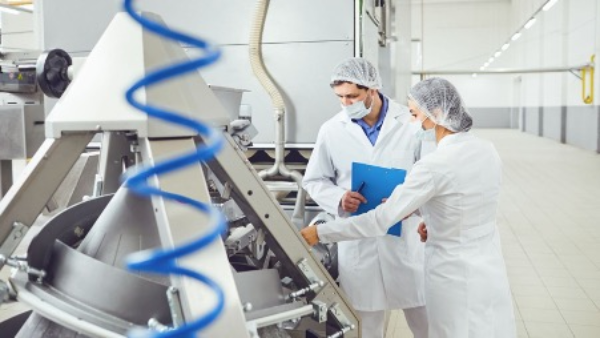Role of Barcodes in The Food Industry
In an era of globalization, where food products traverse vast distances before reaching our plates, assuring traceability, quality, and safety has become a top priority. Food product barcodes are one of the significant developments assisting the food business in fulfilling these priorities.
According to Statista, “The barcode systems and technology segment of the food traceability market generated a global revenue of about 5.82 billion U.S. dollars in 2022”. Furthermore, the statistics show that emerging economies are progressively increasing the implementation of food barcodes.
Food product barcodes have changed how the food industry operates by helping with inventory management, expediting operations, and giving valuable insights into the supply chain.
Brief Overview of the Food Industry
The food industry is a vast and dynamic sector encompassing agriculture, food processing, distribution, and retail. It plays a critical role in meeting the diverse demands of the population for safe, nutritious, and convenient food products.
Unfortunately, the food industry faces several difficulties because of its complexity and interconnectedness. First, as the world’s population continues to rise, there is a greater need for food. It is extremely difficult to meet this demand while still providing food safety, quality and eliminating hunger.
Furthermore, the effects of climate change, such as extreme weather occurrences and altered growing conditions, disturb agricultural operations and endanger food production. Additionally, shifting nutritional trends and consumer tastes requires constant innovation and adaptation in product development.
Main Challenges in the Food Industry

Food items’ safety and quality: Food items’ safety and quality are of utmost importance to the industry. Incidents of contamination, such as bacterial outbreaks or chemical contamination, can put consumers’ health at risk and cause product recalls. For example, there were 125 food recalls in the U.S. in 2019, according to the USDA FSIS.
Tracking and traceability: Modern customers are becoming more aware of the origin, methods of production, and ingredients of the food they consume. Customers demand openness and traceability to make educated decisions about the items they buy. Robust tracking and traceability systems that inform about the product’s path from farm to fork are necessary to meet this need.
Cargo theft: The industry also faces the challenge of cargo theft, which result in financial losses and disrupt the supply chain. Food shipments are a target for thieves because of their high value and ease of resale. Such thefts have financial repercussions in the food industry.
Food Barcoding as a Mitigation Strategy

Businesses can incorporate robust barcode scanning features into their food barcode scanner app or systems, facilitating effective data collection, inventory control, and traceability.
Improved quality control is made possible throughout the supply chain using an intensive barcoding system. Distinctive food product barcodes can be created for each item, incorporating vital details such as batch numbers, expiration dates, manufacturing information, and quality check records. Businesses can instantly identify, trace, and monitor items by scanning barcodes at various stages, facilitating swift recalls, and ensuring stringent quality control measures in case of contamination incidents.
In the food industry, barcodes can also be used to offer a more dependable way to achieve transparency and traceability. For example, by scanning the barcode, consumers can access details about the country of origin, manufacturing methods, and product ingredients. As a result, customers are better equipped to make decisions that align with their preferences and dietary needs.
Integrating a high-quality camera can further improve barcode capture, ensuring accurate inventory management and expediting recalls for rigorous quality control. By incorporating high-quality cameras, organizations can efficiently identify, track, and monitor products at different stages, enabling prompt product recalls and ensuring thorough quality control in the event of contamination.
This technological upgrade optimizes supply chain operations and facilitates well-informed decision-making based on individual preferences and dietary requirements by providing consumers with transparent access to critical product details.
Teamed with ideal industrial cameras, food barcode scanners can also be very helpful in reducing the danger of cargo theft when used in conjunction with other security measures. Businesses may identify and monitor shipments’ movement in real time by labeling them with distinctive food barcodes.
Better visibility and accountability are made possible as a result, making it simpler to spot any irregularities. Barcoding also makes inventory management more effective by reducing errors and boosting supply chain security overall.
How Dynamsoft Barcode Reader helps

Dynamsoft Barcode Reader SDK is a comprehensive barcode scanning and decoding solution that can be applied across various industries, including the food industry. It can help address food industry challenges such as product traceability, quality control, cargo theft, and more. It is used by many organizations, including some Fortune 500 companies.
Try the Dynamsoft Barcode Reader SDK
With its robust barcode detection algorithms, camera enhancing functionality, and OCR capabilities, Dynamsoft Barcode Reader can accurately and quickly read food product barcodes and grocery barcodes even in challenging conditions.
Download the 30-Day Free Trial or try barcode scanner online demo to see it in action.



 Blog
Blog